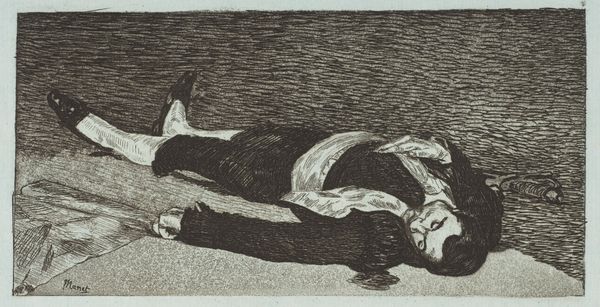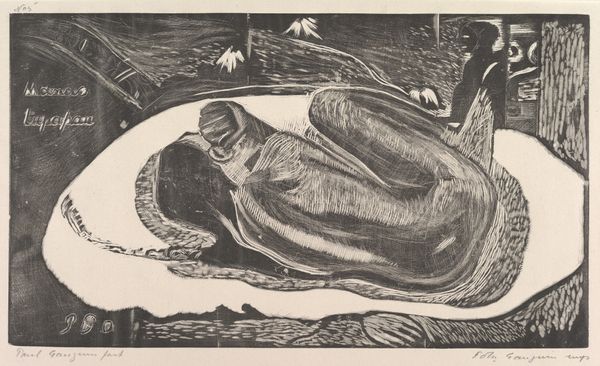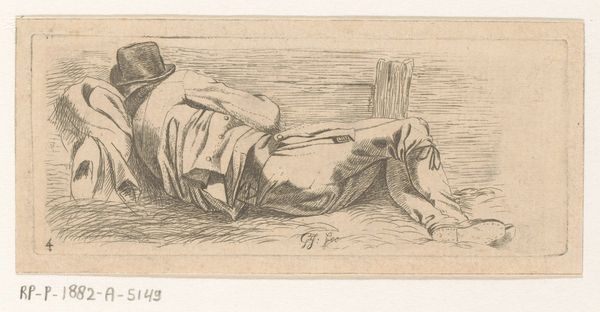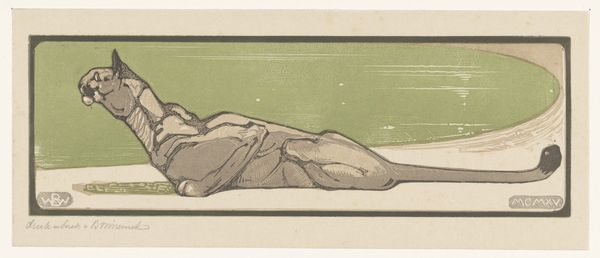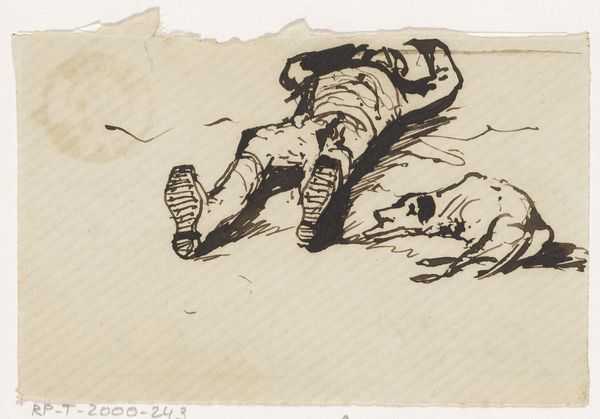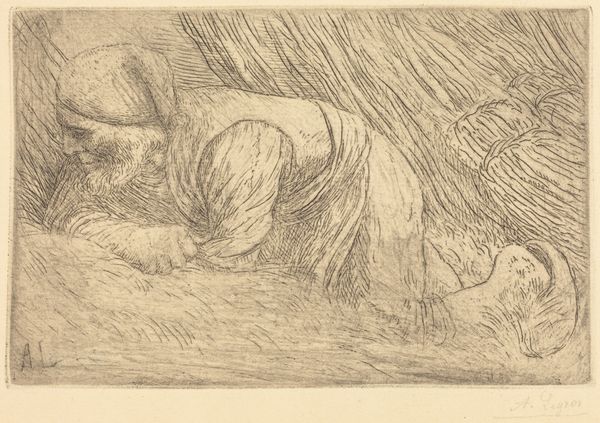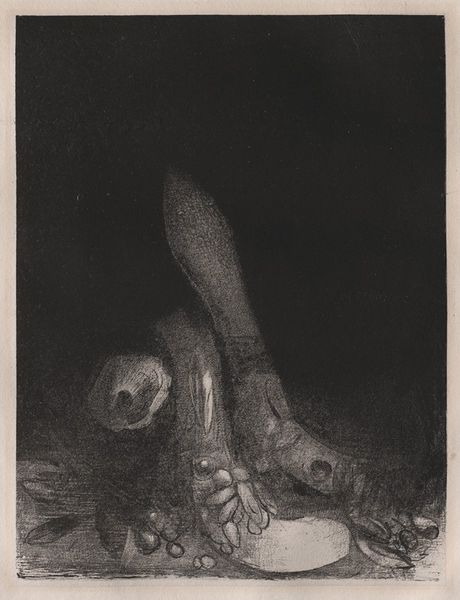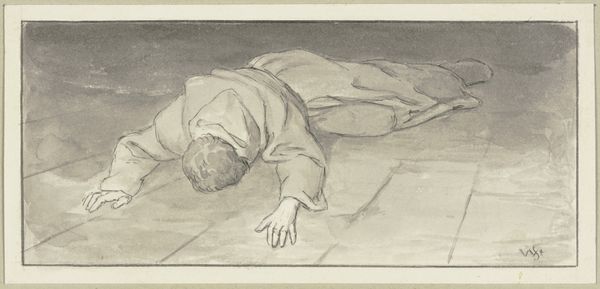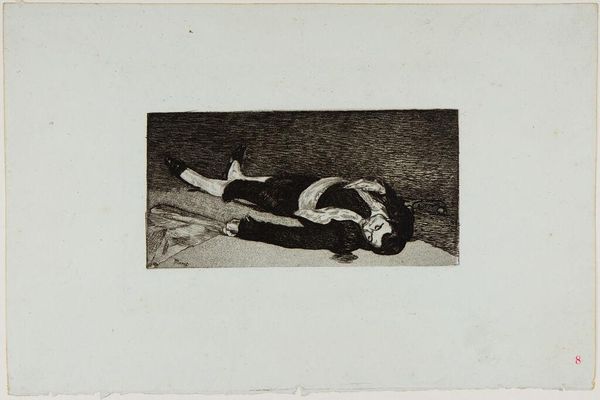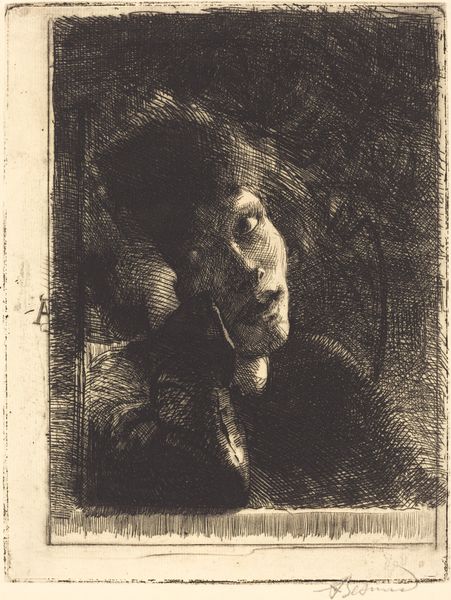
Dimensions: 156 mm (height) x 224 mm (width) (plademaal), 97 mm (height) x 145 mm (width) (billedmaal)
Curator: Édouard Manet's etching and aquatint, "Dead Toreador," created between 1867 and 1868, presents a stark, unflinching vision. It's part of the collection at the SMK, Statens Museum for Kunst. Editor: Wow. It hits you, doesn't it? So final. The figure just... sprawled. All the fight gone out of him. There's something incredibly lonely about it too. Curator: Indeed. Manet plays with the stark contrasts achievable through the etching process, really emphasizing the textures. Look at the stippling used to denote the sand, in contrast to the smooth areas meant to delineate fabric. This texture is something that could be further investigated. Editor: It's interesting; it makes you wonder what happened. Like a story cut short. There's an abandoned cloak or a flag on one side which might provide the clue of that very cut. The way he's just *there*... lifeless but somehow also monumental. You know, a weird kind of glory. Curator: His rendering of light, or perhaps the absence of light in some sections, certainly influences our perception. Note the areas of deep shadow that obscure detail. The subject's expression, for example, remains somewhat unknowable due to this artistic choice. The semiotics of such choice have deep connections with mortality themes of art history in the 19th century. Editor: Almost cinematic, isn't it? Like the last shot of a tragic movie, or a theatre stage where all action has passed, lights dimmed for a second to create a feeling before the curtains. All eyes, that could have witnessed a dance for life, now close still. It captures that moment. Curator: Precisely. Manet challenges conventional approaches by foregrounding death in an unusual composition, where narrative expectations of heroism give way to this sobering scene, achieved through very careful application of form. Editor: It does make you think about mortality in general. You're right about how starkly he presents it. And how he invites you into this still space. Well, I'm surely humbled. What else to add to this sad silence? Curator: Yes, the dialogue Manet creates here about our finitude seems strikingly timeless, given the work’s materiality.
Comments
No comments
Be the first to comment and join the conversation on the ultimate creative platform.
